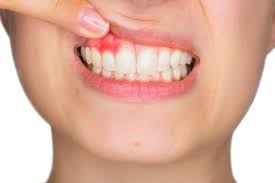In a surprising new development in a well-established field, cardiovascular disease has now been shown to be linked to chronic infection by a number of mechanisms. Chronic infections such as Helicobacter pylori and Porphyromonas gingivalis (from periodontal disease) are now known to colonise the atherosclerotic plaque in a biofilm, initiating chronic inflammation and even autoimmune reactions within the blood vessel walls.
 This new research highlights the role of novel risk factors for cardiovascular disease and the importance of thorough assessment of potential infectious factors in those at risk. Periodontal disease affects 60% of young adults and 90% of individuals over the age of 65. Previously thought to be linked to cardiovascular disease primarily through indirect inflammatory consequences, the inflammation of the gums in periodontitis is now known to allow for direct entry of oral bacteria into the bloodstream.
This new research highlights the role of novel risk factors for cardiovascular disease and the importance of thorough assessment of potential infectious factors in those at risk. Periodontal disease affects 60% of young adults and 90% of individuals over the age of 65. Previously thought to be linked to cardiovascular disease primarily through indirect inflammatory consequences, the inflammation of the gums in periodontitis is now known to allow for direct entry of oral bacteria into the bloodstream.
In the case of Helicobacter pylori, presence of the bacterium in atherosclerotic plaques has been demonstrated as well as the ancillary induction of atherogenic chronic inflammation. Another link between the conditions is the gastric atrophy from chronic H. pylori infection leading to reduced nutrient absorption, especially folate. The resulting increase in homocysteine levels is well known to result in damage to endothelial cells and be a risk factor for the development of cardiovascular disease. High homocysteine may therefore be, in some cases, a marker of chronic infection.
As these, and other strains of bacteria, surround themselves in an impenetrable biofilm, they are not easily detected by either our immune system or in blood cultures. Further, bacteria coated in biofilm colonies are also protected from antibiotic treatment. So how do you clear these harmful bacteria out of the body?
Frequency therapy may be able to both detect and successfully treat bacteria – even those hidden in biofilms. There are natural substances which help to breakdown the biofilms, making bacteria vulnerable to treatment.
